Tribal women are the backbone of indigenous communities, earning respect on par with men. The presence of clan goddesses highlights their essential role in society. As nurturers of nature and protectors of ancient traditions, they wield significant influence in both family leadership and sacred rituals.
This article highlights the unique lifestyles, rich heritage, and emerging leadership of women in India’s tribal landscape. Join us in celebrating the remarkable stories and strengths of these extraordinary women, who embody the essence of tribal identity.
Who Are Tribal Women and Why Their Stories Matter
Tribal women are the heart of India’s indigenous communities, embodying strength and tradition as farmers, healers, and artisans. Their voices are often marginalised, yet their stories reflect resilience and ancient ways of life, helping us reconnect with the earth and our communities in a modern world.
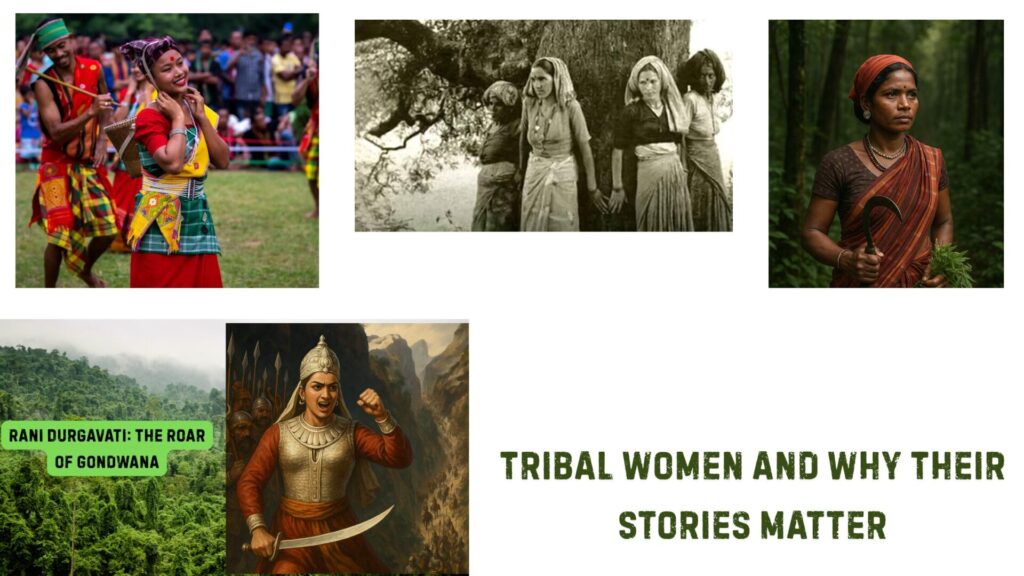
Preservers of Culture
Tribal women are essential guardians of indigenous knowledge and tradition. Through rituals, songs, and crafts, they preserve their communities’ essence. They paint sacred walls, prepare Ayurvedic medicines, and celebrate festivals, passing down customs and mythologies to the younger generation. Relying on memory rather than written records, these women defend cultural diversity in a rapidly uniform world. Their vibrant culture lives on in their hearts.
Challenges They Face
Tribal women are deeply connected to tradition, culture, and nature, yet they face significant challenges that hinder their development. Although government schemes exist to support them, implementation is often lacking. This results in barriers to education, limited healthcare, early marriages, and gender-based discrimination. Living in remote areas with scarce resources, their voices are frequently marginalised in decision-making processes. Addressing these issues is crucial to empowering tribal women and upholding their rights.
Voices of Change
A quiet revolution is taking place among tribal women, with organisations advocating for their rights in tribal areas. Supported by the law, these women are entering roles in grassroots activism and local governance that were previously denied to them.
Tribal women are now benefiting from reservations to become teachers, health workers, forest guards, and even village heads (sarpanchs), boldly challenging traditional systems. NGOs and self-help groups are supporting their journey by providing education, skills, and legal awareness. Social media and storytelling are giving them a platform to share their experiences. These women are not just preserving tradition; they are reshaping it with pride, dignity, and a vision for the future.
The Deep Bond Between Tribal Women and Nature
Tribal women possess a powerful and unbreakable bond with nature that transcends mere survival. Their invaluable contributions to the preservation of their culture are distinct and vital. This sacred relationship is founded on trust, respect, and harmony. Unlike the modern world, which often views nature as a resource to be exploited, tribal women embrace it as family, lovingly calling it “dharti Maa” (Mother Earth). From birth to death, they play a crucial role in honouring the clan goddess, and their lives are intricately connected to the forests, rivers, animals, and soil that surround them.
They have an incredible understanding of when to sow and harvest, which herbs effectively heal various ailments, and the importance of taking only what is necessary from nature—never overindulging or wasting. The dishes crafted in tribal societies are both delicious and satisfying, created without the need for excessive spices or oils. This deep connection to nature and commitment to sustainable living should be celebrated and recognised.
We treat the forest like it’s a cherished part of our family, engaging in daily activities like gathering firewood, fetching water, and growing crops with gratitude and respect for nature.
My grandmother used to tell me that when we came across animals in the forest, we’d ask them to let us by, and often they would step aside, as if they understood. In tribal cultures, trees are viewed as ancestors, rivers as goddesses, and mountains as protectors. These beliefs reflect sustainable practices that tribal women have upheld for generations. That’s why I cherish these stories. Tribal women truly are sacred souls with a deep connection to the world around them.
In today’s world of climate crisis and disconnection, tribal women’s wisdom teaches us that protecting nature begins with love, not control. Their lives show that living in harmony with the earth is essential for our shared future.
Warriors, Healers, Leaders: Meet the Tribal Women Who Made History
At the heart of India’s forests are extraordinary tribal women who have profoundly shaped our history. Despite their significant contributions, contemporary politics often overlooks them. These warriors fought for freedom, healers preserved indigenous wisdom, and leaders confronted injustice. Their inspiring stories live on, particularly through the folk songs of the Adi dialect.
Today we will learn about the strength of tribal women who fought for the country alongside the Queen of Jhansi and even sacrificed themselves for the 1855 Hol Diwas.
Phoolo and Jhano Murmu (Santhal Revolt)
Without us, the forest is silent! –Phoolo and Jhano Murmu
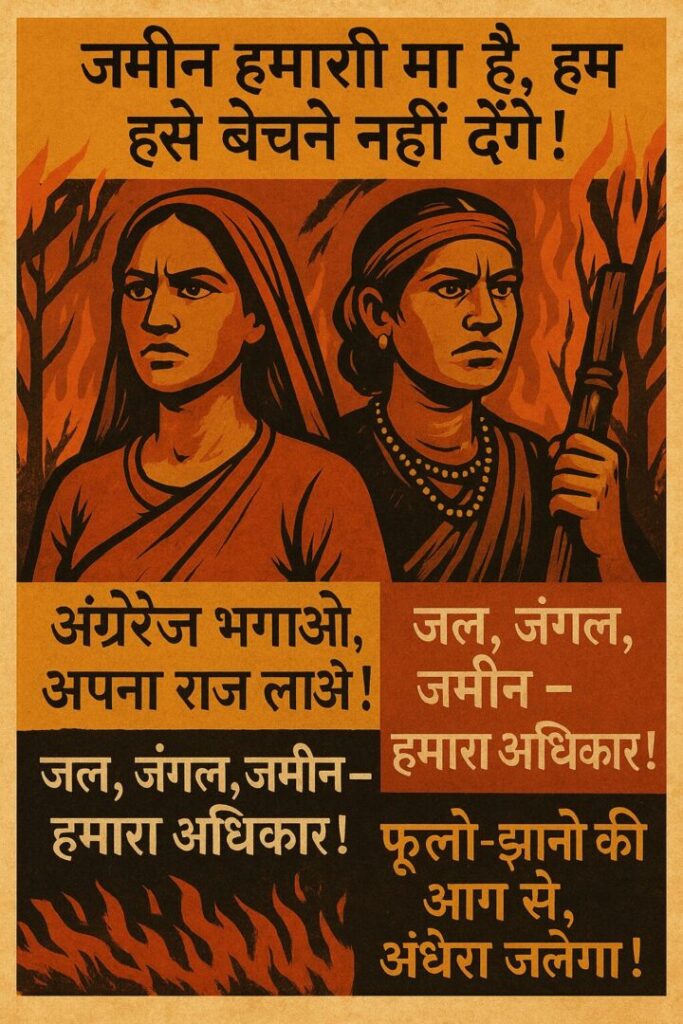
In 1855, the courageous sisters of the Santhal tribe rebelled against British rule. Armed with bows and arrows, they fought not only for their land but also for their identity and pride. With all their strength, they stood up for what they believed in. Today, numerous tribal organisations honour their legacy and work to raise awareness about their struggle among the people.
Rani Durgavati (Gond Dynasty, 1524–1564)
Queen Durgavati, a courageous Gond leader, ruled wisely after her husband’s death. When the Mughal army attacked, she fought to the death instead of surrendering, embodying the dignity of tribalism. Her legacy lives on, with June 24 observed as “Balidan Diwas” (Martyr’s Day) in her honour.
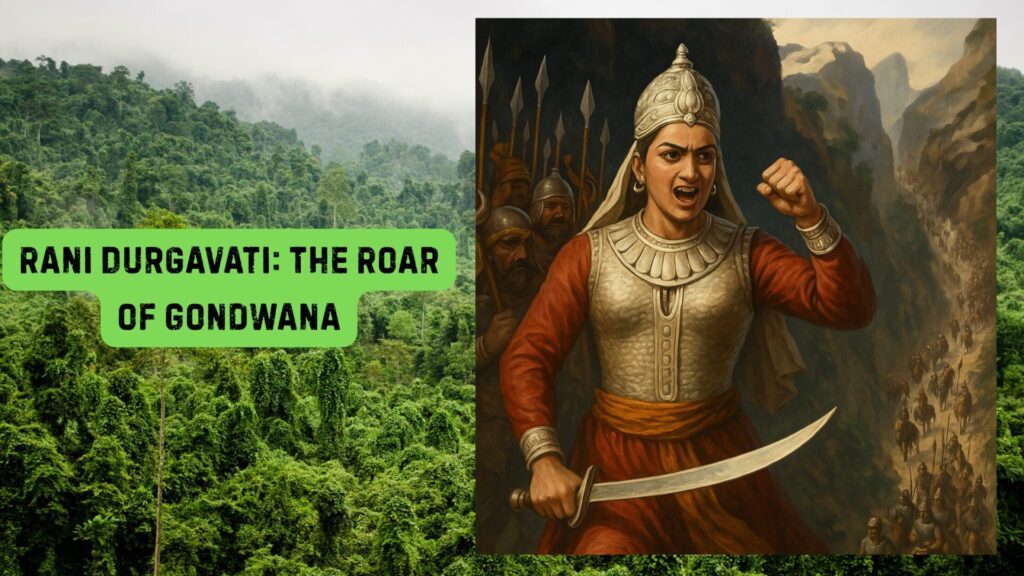
“Better to die with dignity than live without honour.” – Rani Durgavati
Tulsi Gowda (Halikar Tribe, Karnataka)
Tulsi Gowda, famously recognised as the “Encyclopedia of Forests,” has planted an impressive 30,000 trees throughout her lifetime. Her remarkable understanding of local flora, despite not having a formal education, led her to receive the prestigious Padma Shri award in 2021. This is a matter of great pride for tribal women and society.
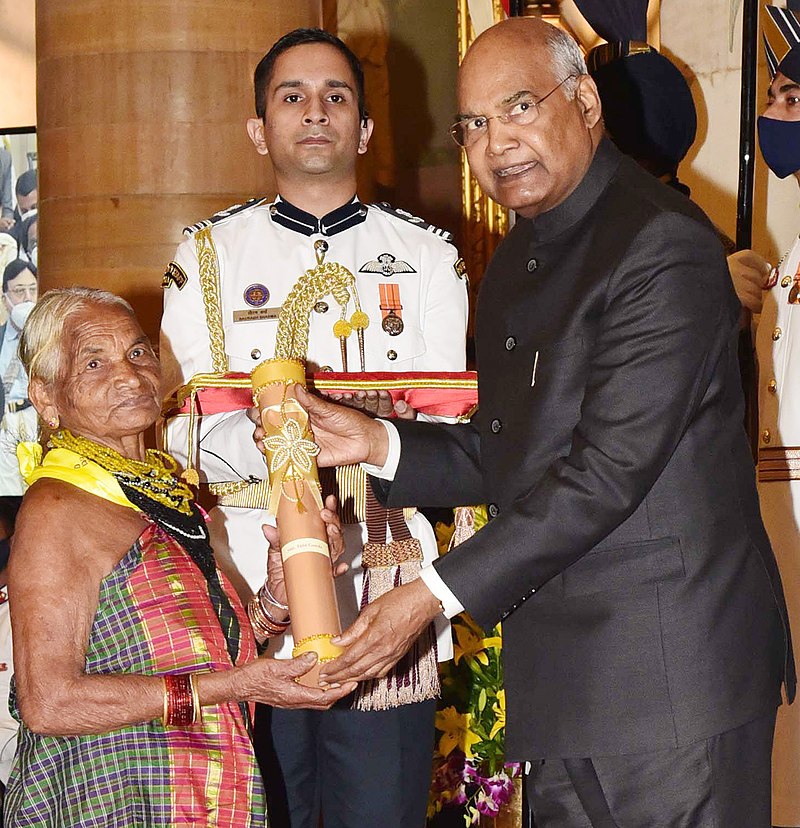
Dayamani Barla (Munda Tribe, Jharkhand)
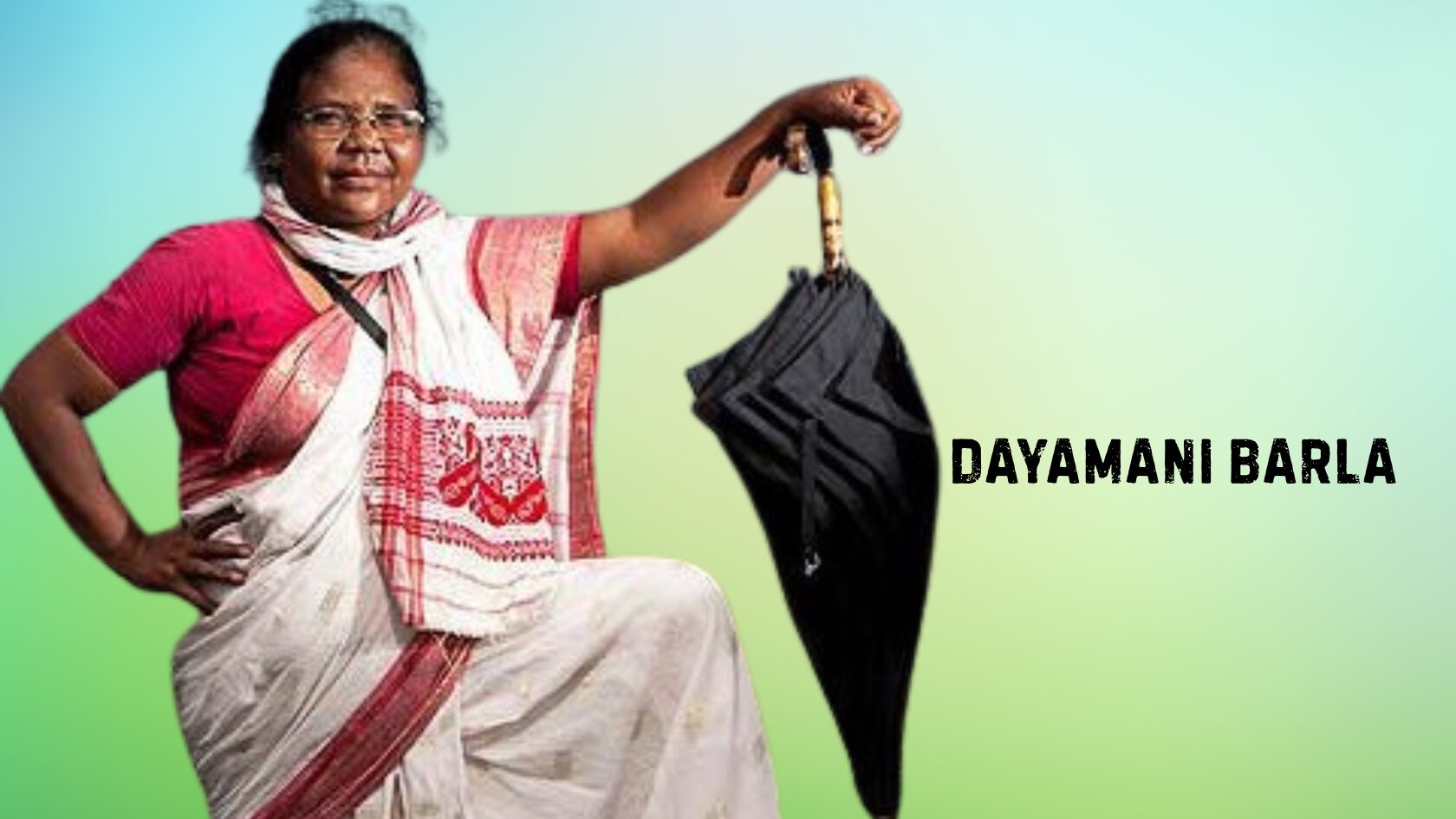
A tribal society may witness injustices, but when its tolerance is pushed to the limit, it believes in fighting back, regardless of the consequences. This is a fundamental law of nature. Dayamani, a passionate journalist and activist, has stood up against corporate land grabbing and corruption, giving a powerful voice to tribal people in the media. She is rightly referred to as the “Iron Lady of Jharkhand.”
He contested the 2019 assembly elections as a JVM candidate from Khunti constituency. But he missed the opportunity to serve the people.
Jani Bai (Baiga Tribe, Madhya Pradesh)
Jani Bai is a celebrated traditional healer and forest protector, renowned for her extensive knowledge of medicinal plants that have saved countless lives. She stands as a powerful symbol of the rich healing heritage of tribal women. Across various tribal communities, many women like Jani Bai continue to thrive as healers, playing a vital role in maintaining the health of their people. This invaluable contribution is a tremendous honor for tribal women, showcasing their strength and significance in society.
Soni Sori (Adivasi teacher & activist, Dantewada, Chhattisgarh)
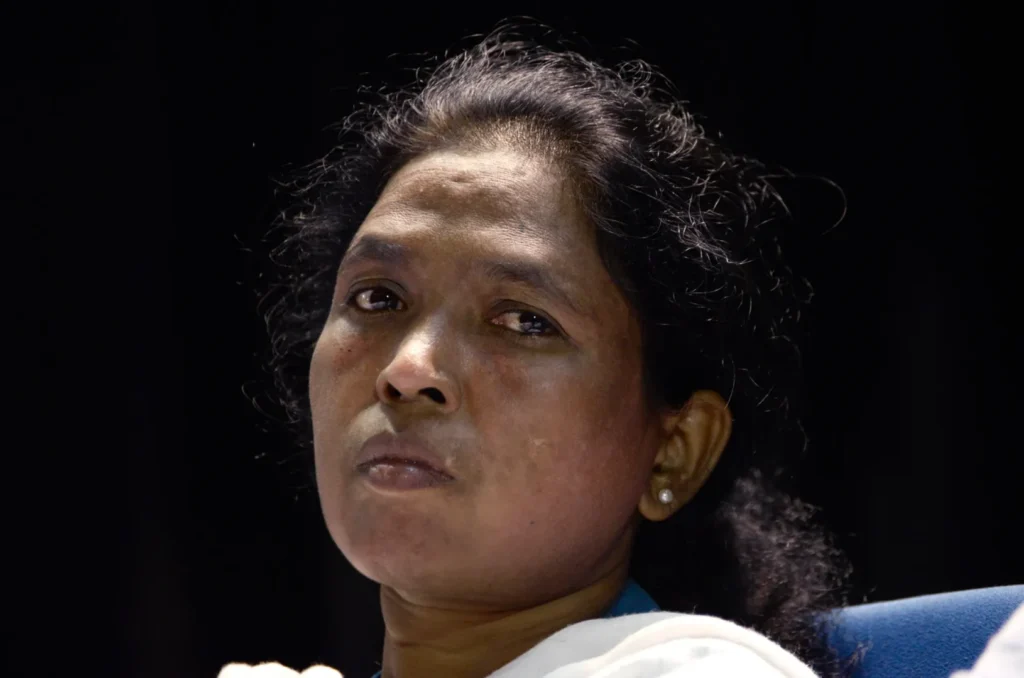
Soni Sori, born in 1975 in Bade Bedma, was a school teacher who became a human rights advocate in conflict-ridden Bastar.
Why She Matters She is a survivor of brutal injustice. Arrested in 2011 on false charges related to Maoism, Sori endured horrific torture while in custody, including sexual assault and an acid attack on her face. Despite these atrocities, she refused to remain silent. Those who fight for the truth are not afraid.
She became a strong advocate for tribal rights, fighting police brutality and helping women file sexual violence complaints. She won the prestigious Front Line Defenders Award, honouring her bravery and dedicated fight for human rights in one of India’s most dangerous conflict zones
“The more I am tortured, the stronger I become. If they succeed in silencing me, they would only silence one voice but other women will rise.”
— Soni Sori reflecting her unwavering courage
Modern Identity of Tribal Women: Education, Expression, Empowerment
Within the lush forests and hills of India, a remarkable transformation is underway, driven by the inspiring efforts of tribal women. These women, who have historically played vital roles in their communities, are now embracing modern identities while honouring their rich traditions. They are breaking barriers and stepping into positions that were once considered out of reach. By actively claiming their constitutional rights, tribal women are making significant strides as teachers, entrepreneurs, artists, athletes, and community leaders. Their journey is a powerful testament to resilience and progress, shaping a brighter future for themselves and their communities.
Tribal women’s education is thriving, and they are making significant strides in various fields, both nationally and internationally. With increased access to schooling, tribal girls are pursuing degrees and representing their communities on prominent platforms. From Odisha to Madhya Pradesh and Jharkhand, these young women are proving that heritage and higher education can coexist. Given the opportunity, tribal girls excel and showcase their capabilities with confidence.
Tribal women are reviving ancient art forms like Warli, Pithora, and Saura with contemporary flair. They are also using social media, street theatre, and poetry to share their stories and dreams. Once suppressed, their voices now resonate with clarity and confidence, marking a proud moment for women and the tribal community.
Earth Warriors: How Tribal Women Stand Tall to Save Forests & Ancestral Wisdom
Envision the ancient forests of that era, where the serene shade resonates with the songs of birds and the palpable tension of war is felt only by those who truly grasp its significance. When it comes to protecting the forest, we must recognise the indispensable role of tribal women. These communities regard the forest as their father, and the women cherish it as their child. They are the steadfast guardians of India’s green lungs, fiercely defending not only the land and trees but also a way of life intricately woven into the fabric of nature.
Women in tribal communities, whether indigenous or not, view forests not merely as resources but as relatives, providers of medicine, food, shelter, and spiritual sustenance. From the Niyamagiri hills of Odisha to the dense Sal forests of Jharkhand, tribal women have bravely fought against logging, mining, and encroachment, often risking their lives to protect what they refer to as “their motherland.” They do this without harming the forest’s water or wildlife. However, when wrongly accused, they have also stood up for themselves. Their struggles and sacrifices are immortalised not in history books but in the folk songs that are prevalent within their communities.
From Forest Floors to History Books: The Power of Tribal Women
In tribal societies, everyone, whether a woman, man, elder, or child, prioritizes and cherishes nature, a legacy from their ancestors. Tribal women play a vital role in protecting the forest. This is the inspiring story of a group of women from Reni in the Himalayas who transformed environmental history. Led by the brave Gaura Devi, they stood against armed woodcutters to defend their beloved ancient trees, sparking the Chipko movement.
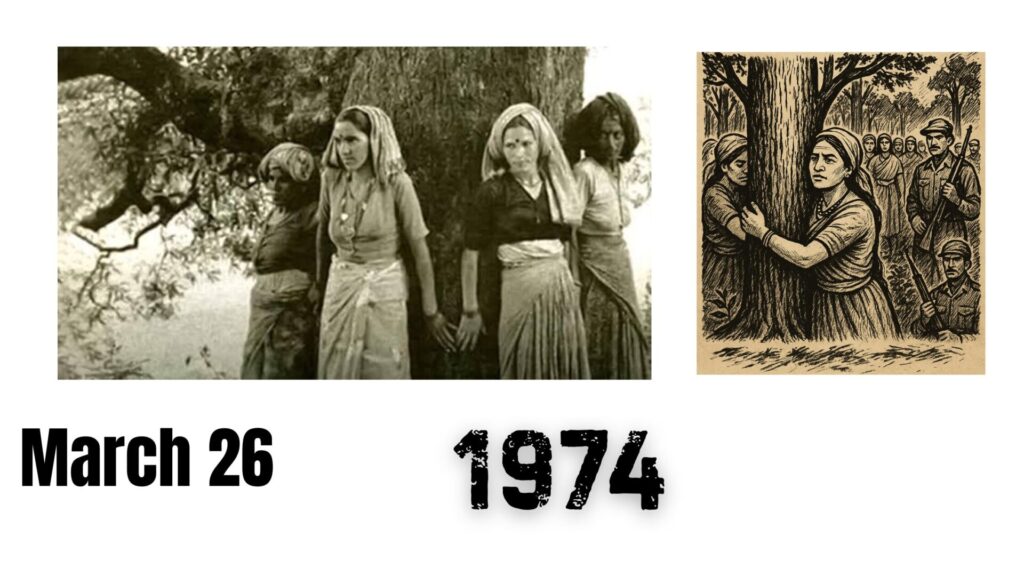
Though lacking formal education and political power, these tribal women grasp something many policymakers miss: the importance of living in harmony with nature. They know that losing natural resources threatens their very existence. For them, forests are vital lifelines, providing food, fuel, and spiritual connection, celebrated through timeless festivals.
Their resistance isn’t born from activism but from survival. In 1974, when loggers arrived unexpectedly, it was the women who courageously stood up to protect their land. Their love for the forest shines through their actions, and fear has no place among them.
Led by Gaura Devi, the women of Reni village physically surrounded the trees, refusing to move. With unwavering determination, they declared,
“We are the forest, and the forest is us.”
Their peaceful resistance prompted the government to listen, a rare moment when tribal women’s voices influenced policy.
The Chipko movement rapidly spread to neighbouring regions, inspiring forest conservation efforts across India. This pivotal moment for ecofeminism highlighted the essential role of women from indigenous and tribal communities in sustainability.
The story of the Chipko Andolan goes beyond just trees; it is about roots, resilience, and the emergence of tribal women as quiet champions of sustainability. In a world that often prioritises progress, their legacy serves as a powerful reminder that true change begins with those who embrace what others tend to overlook.
FAQ
Who are considered tribal women in India?
Tribal women belong to India’s Scheduled Tribes (Adivasis) and live in remote, forested areas. They are known for their unique culture, dialects, and strong community ties, and hold equal importance in society as men.
Why are tribal women called the unsung environmental guardians of India?
Tribal women took charge of environmental protection, knowing that losing nature meant losing their identity. They confidently stood among ancient trees, practising a deep-rooted environmentalism passed down through generations, an embodiment of tribalism.
What makes tribal women natural climate leaders?
They understand the forest like a map, knowing when birds migrate and rivers swell. Their community-focused and spiritually grounded decisions reflect a deep understanding of nature, something tribal women innately practice without formal training.
Are tribal women only protectors of forests, or more?
So much more. They are cultural defenders and resistance leaders, teaching ancient songs and opposing illegal logging. Their stories embody survival, wisdom, and defiance.
How can we empower tribal women without erasing their identity?
Empowerment means providing tools to protect their lands and traditions, not imposing modernity. Support land rights, document oral knowledge, and involve them as co-creators in policy for a sustainable future.
Who are considered Native women in the Indian context?
Indigenous women in India exemplify the rich diversity of tribal cultures. They play vital roles in preserving their heritage and driving community development, demonstrating remarkable resilience and strength.
Conclusion
Tribal women have long been silent guardians of nature, culture, and resilience. It is unfortunate that historians have often overlooked their contributions. Their stories of sacrifice for society are captured in the folk songs of tribal dialects, serving as valuable evidence of their impact. From leading grassroots movements like the Chipko movement to preserving ancient wisdom and sustainable practices,
their contributions are both historic and ongoing. Empowering tribal women is not just a matter of justice; it is a critical step toward a more balanced, inclusive, and sustainable future. Their stories deserve to be not only heard but also celebrated. Across the country, tribal women are fearlessly fighting for the protection of nature, self-respect, and the customs and traditions that are a source of pride for their communities. We will continue to share these heroic stories of tribal society, as well as tales of courage, culture, and tradition. If I have missed anything, please let me know.
Your feedback means a lot to us.
If you have any questions, suggestions, or concerns feel free to leave a comment below. We’re here to listen, grow, and improve together.
Thank you for being a part of this journey.

